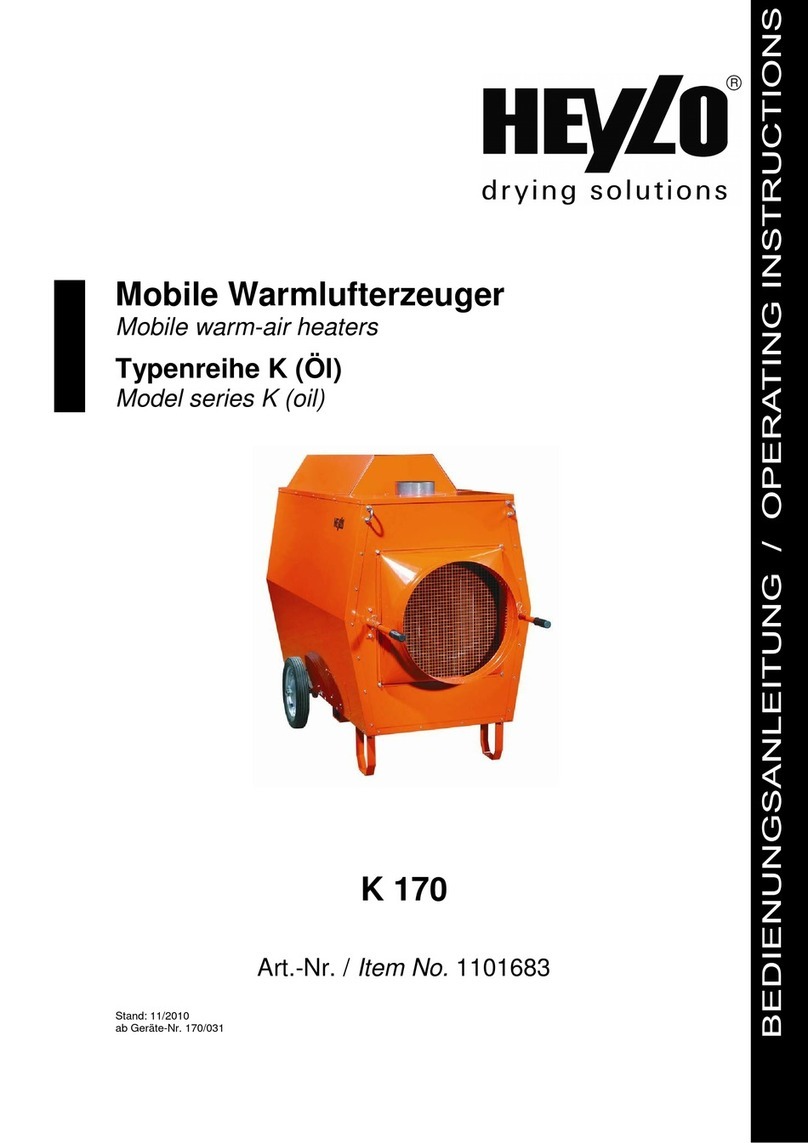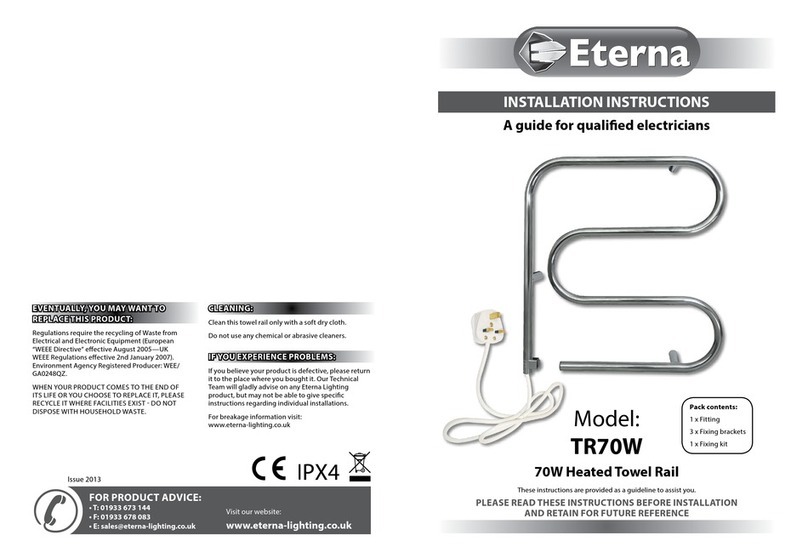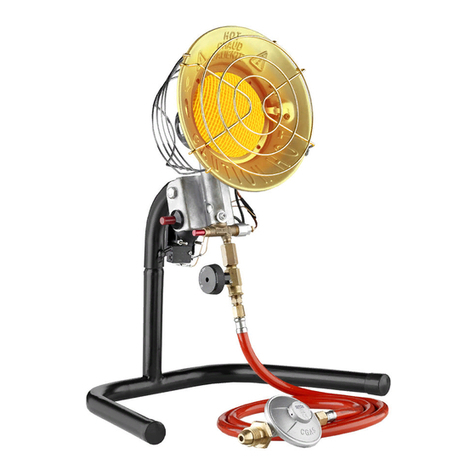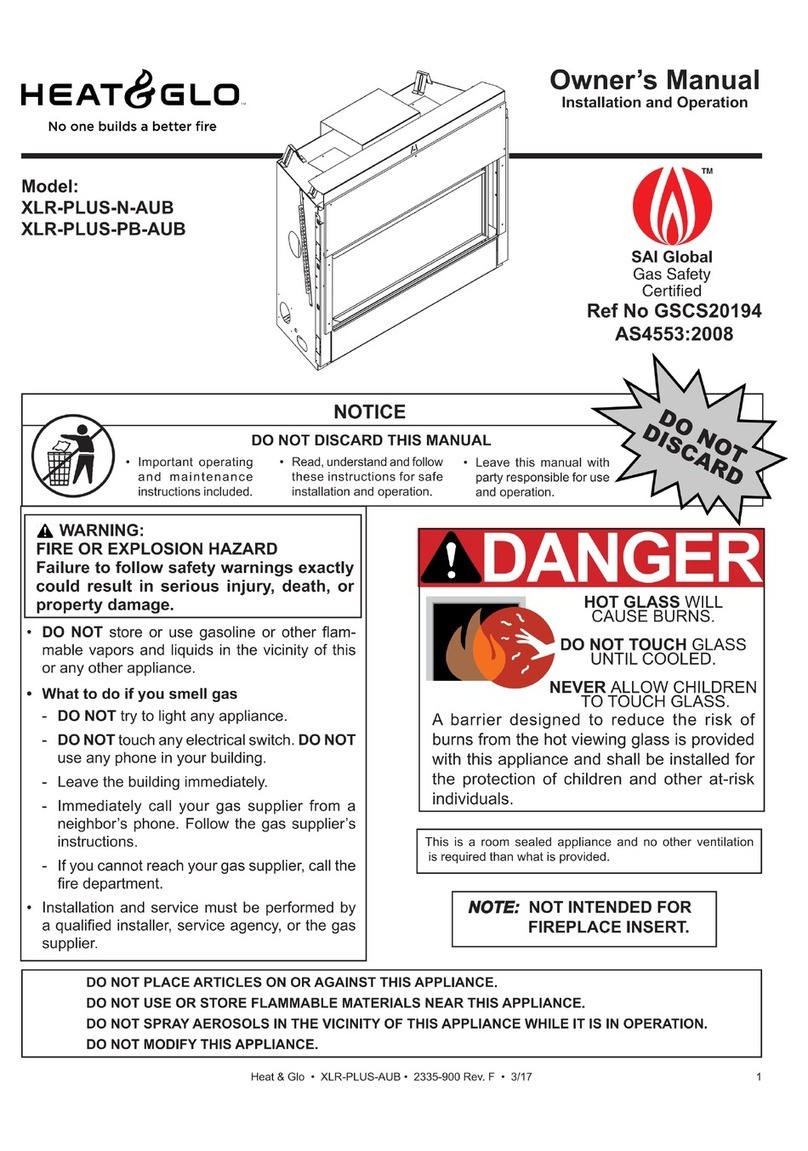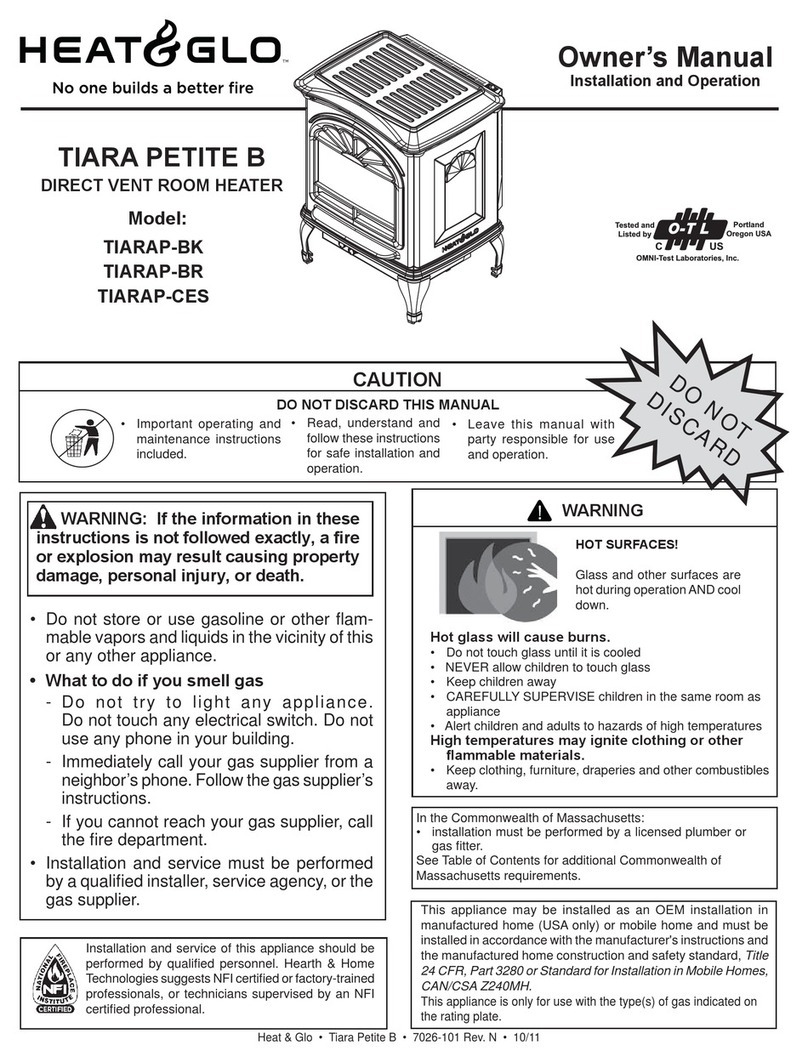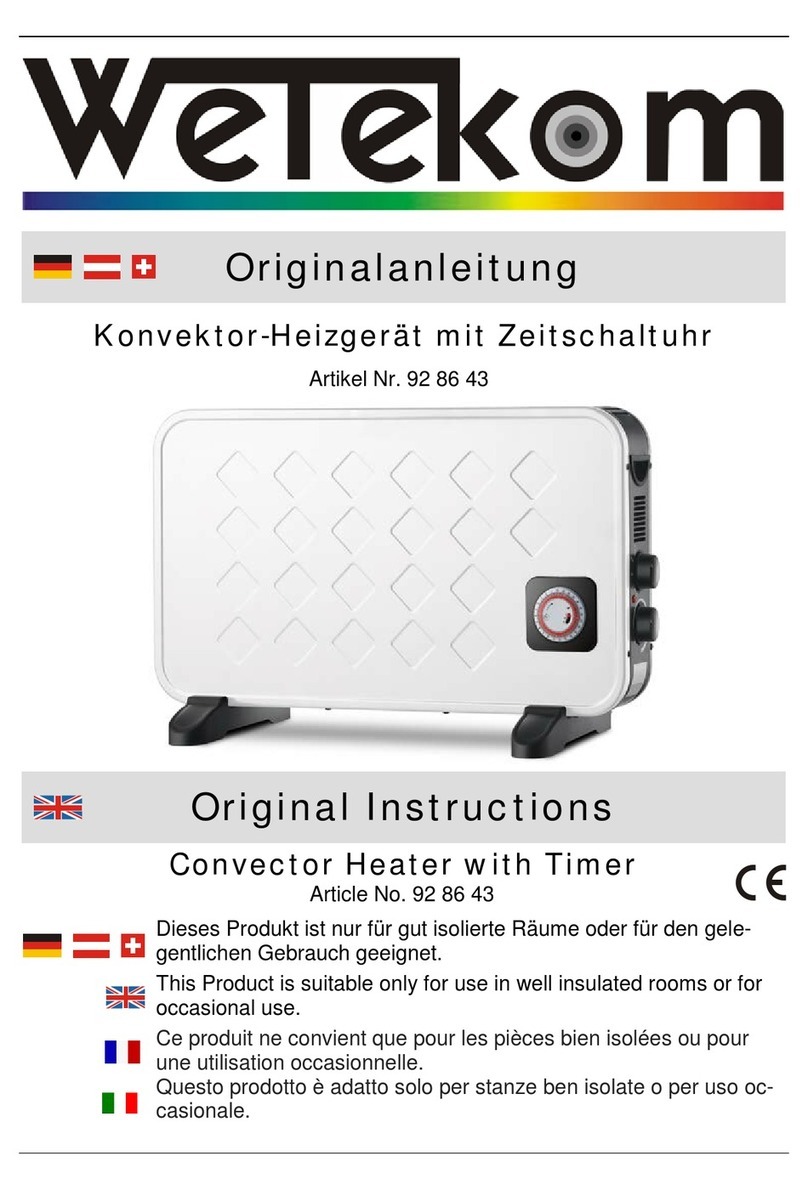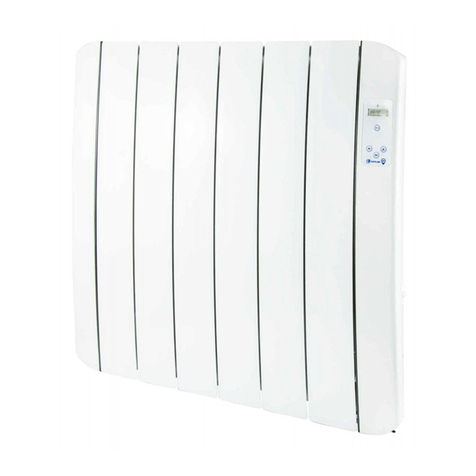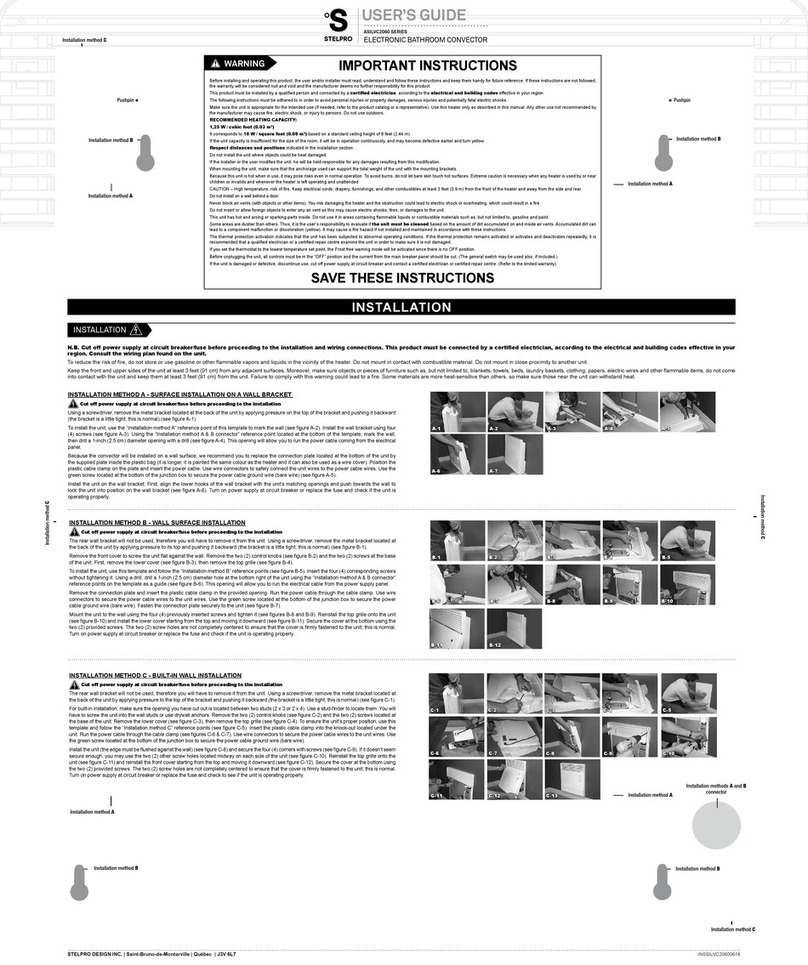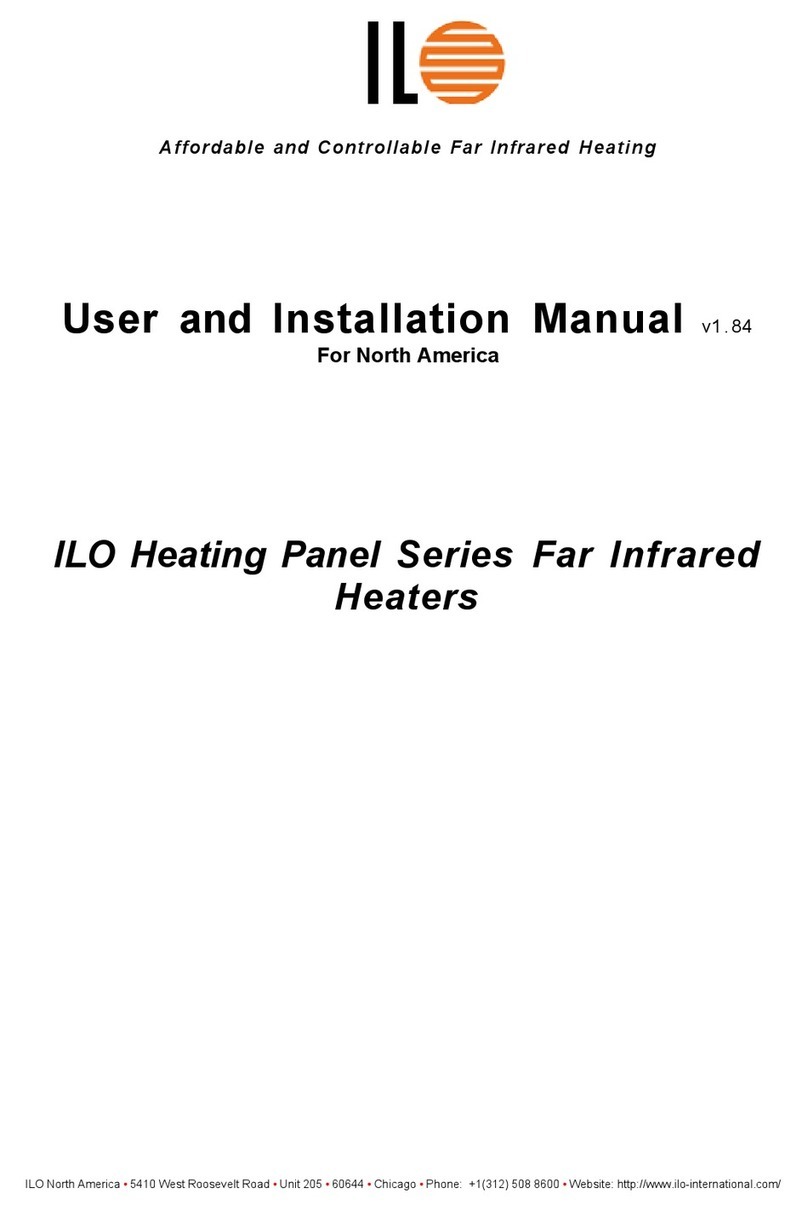
Page 2 Heat & Glo · Tiara I B & Tiara II B · 7010-149M August 1, 2008
Read this manual before installing or operating this appliance.
Please retain this owner's manual for future reference.
Congratulations
Congratulations on selecting a Heat & Glo gas appliance -
anelegantandcleanalternative towoodburningappliances.
TheHeat&Glogasapplianceyou have selected is designed
to provide the utmost in safety, reliability, and efficiency.
As the owner of a new appliance, you'll want to read and
carefully follow all of the instructions contained in this
Owner's Manual. Pay special attention to all Cautions and
Warnings.
ThisOwner'sManualshouldberetainedforfuturereference.
We suggest that you keep it with your other important
documents and product manuals.
The information contained in this Owner's Manual, unless
noted otherwise, applies to all models and gas control
systems.
Your new Heat & Glo gas appliance will give you years of
durable use and trouble-free enjoyment. Welcome to the
Heat & Glo family of gas appliance products!
SAMPLE OF RATINGS LABEL
LOCATION: Hang tag attached to rear of appliance
Serial No.
Model Name
Test Lab &
Report No.
Manufactured
Date
MINIMUM CLEARANCES TO COMBUSTIBLES / ESPACE MINIMUM AUX COMBUSTIBLES
Minimum clearances required from combustible construction for all appliance surfaces. / Espaces minimum exigés de la
construction combustible aux surfaces de l’appareil.
Date of Manufacture / Date du Manufacturier
2008 2009 2010 Feb Mar Apr May Jun Jul Aug Sep Oct Nov DecJan
DO NOT REMOVE THIS LABEL / NE PAS ENLEVER L’ÉTIQUETTE Made in U.S.A. / Fait Aux États-Unis 7010-150
A. Side of stove top to side wall 8-1/2" (216mm) D
u côté du poêle au côté du mur
B. Rear of stove to back wall 1/4" (6mm)
Le contrôle arrière au mur arrière
C. Corner of stove top to side wall 3/8" (9mm) Du coin du dessus du po
êle au mur de côté
D. Minimum Alcove Height 54" (1372mm) Ha
uteur minimum du plancher au plafond
E. Maximum Alcove Depth 36" (914mm) P
rofondeur maximum de l'alcove
F. Minimum Alcove Width 40" (1016mm)
Largeur minimum de l'alcove
G. Stove to Ceiling Clearance 27" (686mm) Le po
êle au dégagement de plafond
H. Top of Pipe to Combustible 1-1/2" (38mm) Le sommet de tuyau à combustible
Side of Pipe to Combustible 1" (25mm) Le côté de tuyau à combustible
Inside Outside Cornerwall Vent 9" (229mm) À l'intérieur de conduit de mur de coin extérieur
Right and left sides of appliance are determined when facing the front of appliance. / Les
côté gauches et droits de
l'appareil sont d
éterninés lorsque vous
êtes en face de l'appareil.
G-Alcove
A
F
de l'alcôve
90° off top up & out ceiling
clearance 90° du sommet en
haut et hors le degagement de
plafond
A
B
E
A A
G
D
H
"A" measurement is from stove top,
not side /
"A"mesure est du
sommet de poêle, pas le côté
HEARTH: A non-combustible hearth pad is not required. However, the floor beneath the stove must be stable, level, and strong
enough to support the stove without a tipping hazard. / CHEMINÉE: Un coussinet non-combustible de cheminée n’est pas
exigé. Cependant, le plancher en dessous du poêle doit être droit, à niveau et assez fort pour supporter le poêle sans le
hasard de basculer.
C
C
0-2000 FT’ 0-2000FT
Input Rate on “HI” (BTU/Hr) 31,000 30,000 Puissance Évaluée à “HI” (BTU/Hr)
Input Rate on “LO” (BTU/Hr) 22,000 23,000 Puissance Évaluée à “LO” (BTU/Hr)
Maximum Output (BTU/Hr)** 20,943 21,519 Puissance Maximum (BTU/Hr**
Main Burner Orifice .106 .063 Orifice du Brûleur Principal
Minimum Inlet Pressure
(Inches W.C.)
4.5” 11” Pression Minimum de la Valve (pouces W.C.)
Maximum Inlet Pressure
(Inches W.C.)
7.0” 14” Pression Maximum de la Valve (pouces W.C.)
M
anifold Pressure on
“HI”
(Inches W.C.)
3.5” 10” Pression du Collecteur d’ Échappement à “HI” (pouces W.C.)
**Max Venting, Blower On **Ventilation Maximum, Ventilateur Allumé
For use with Propane
Usage Au Gaz Propane
For use with Natural Gas
Usage Au Gaz Naturel
APPROVED FOR CANADA AND USA TO: ANSI Z21.88-2002 / CSA 2.33-02 Vented Gas Fireplace Heaters, and applicable sections of UL307b Gas Burning HeatingAppliances for Manufactured Homes and Recreational
Vehicles, CAN/CGA 2.17-M91 Gas Fired Appliances for use at High Altitudes. This appliance is manufactured for operation with Natural Gas. For conversion to propane Manufacturer's instructions must be used. This
appliance may be installed in a bedroom or bedsitting room; in Canada remote thermostat installation is required.
APPROUVÉ-POUR LE CANADA ET LES ÉTATS-UNIS: ANSI-Z21.88-2002 / CSA 2.33-02 Fournaises au Gaz avec Ventilation, et les sections applicable de UL 307b Appareils de Chauffage Au Gaz our les Maisons Mobiles et les
Vehicules Motoriss, CAN/CGA 2.17-M91 Gas Fired Appliances for use at High Altitudes. Cet appareil est manufactur pour l'operation avec le Gaz Naturel. Pour une conversion au gaz propane les pices du Manufacturier et ses
instructions doivent tre utilises. Cet appareil peut tre utilis dans une chambre à coucher ou salle de sjour, au Canada, l'installation d'un thermostat à distance est exige.
FAN TYPE VENTED CIRCULATOR / VENTILATEUR CIRCULATOIRE
Optional Blower Kit #GFK-160A
/
Le Souifleur Optionel Kit #GFK-160A
120Vac, 60Hz., 12 Amperes or less (ou moins)
Route power cord away from unit. /
Éloignez le fil électrique de l'appareil.
Do not route
power cord under or over stove. /
Ne pas faire passer le fil électrique au dessus ou en dessous de l'appareil.
SAMPLE
VENTED GAS FIREPLACE HEATER
NOT FOR USE WITH SOLID FUEL
Serial No / Numéro du
Report No. / Rapport Numéro
061-S-43b-5 FOURNAISE AU GAZ AVEC VENTILATION
NE PAS UTILISER AVEC LE COMBUSTIBLE SOLIDE
MODEL / MODÈLE: TIARA I (B)
A division of Hearth & Home Technologies Inc.
20802 Kensington Boulevard, Lakeville, MN 55044
007
O-T
Tested and
Listed by
Portland
Oregon USA
OMNI-Test Laboratories, Inc.
CUS
Barcode








